3,5,6-Trichloro-2-pyridinol
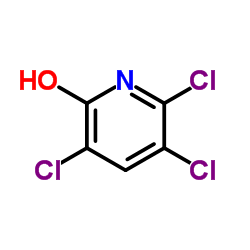
3,5,6-Trichloro-2-pyridinol structure
|
Common Name | 3,5,6-Trichloro-2-pyridinol | ||
|---|---|---|---|---|
| CAS Number | 6515-38-4 | Molecular Weight | 198.434 | |
| Density | 1.7±0.1 g/cm3 | Boiling Point | 325.0±37.0 °C at 760 mmHg | |
| Molecular Formula | C5H2Cl3NO | Melting Point | 328-330ºC | |
| MSDS | Chinese USA | Flash Point | 150.4±26.5 °C | |
| Symbol |



GHS05, GHS07, GHS09 |
Signal Word | Danger | |
Use of 3,5,6-Trichloro-2-pyridinol3,5,6-Trichloro-2-pyridinol (TCP) is the main degradation product of the herbicide Triclopyr and the insecticides Chlorpyrifos and Chlorpyrifos-methyl[1]. |
| Name | 3,5,6-trichloropyridine-2-one |
|---|---|
| Synonym | More Synonyms |
| Description | 3,5,6-Trichloro-2-pyridinol (TCP) is the main degradation product of the herbicide Triclopyr and the insecticides Chlorpyrifos and Chlorpyrifos-methyl[1]. |
|---|---|
| Related Catalog | |
| References |
| Density | 1.7±0.1 g/cm3 |
|---|---|
| Boiling Point | 325.0±37.0 °C at 760 mmHg |
| Melting Point | 328-330ºC |
| Molecular Formula | C5H2Cl3NO |
| Molecular Weight | 198.434 |
| Flash Point | 150.4±26.5 °C |
| Exact Mass | 196.920197 |
| PSA | 32.86000 |
| LogP | 2.16 |
| Vapour Pressure | 0.0±0.7 mmHg at 25°C |
| Index of Refraction | 1.617 |
| InChIKey | WCYYAQFQZQEUEN-UHFFFAOYSA-N |
| SMILES | O=c1[nH]c(Cl)c(Cl)cc1Cl |
| Storage condition | Refrigerator |
| Stability | Stable. Incompatible with strong oxidizing agents. |
| Symbol |



GHS05, GHS07, GHS09 |
|---|---|
| Signal Word | Danger |
| Hazard Statements | H302-H318-H411 |
| Precautionary Statements | P273-P280-P305 + P351 + P338 |
| Personal Protective Equipment | dust mask type N95 (US);Eyeshields;Gloves |
| Hazard Codes | Xn:Harmful;N:Dangerousfortheenvironment; |
| Risk Phrases | R22;R41;R51/53 |
| Safety Phrases | S26-S39-S61 |
| RIDADR | UN 3077 |
| RTECS | UU7786700 |
| HS Code | 2933399090 |
| Precursor 8 | |
|---|---|
| DownStream 7 | |
| HS Code | 2933399090 |
|---|---|
| Summary | 2933399090. other compounds containing an unfused pyridine ring (whether or not hydrogenated) in the structure. VAT:17.0%. Tax rebate rate:13.0%. . MFN tariff:6.5%. General tariff:20.0% |
|
Non-invasive biomonitoring for PFRs and PBDEs: new insights in analysis of human hair externally exposed to selected flame retardants.
Sci. Total Environ. 505 , 1062-71, (2014) In this study, we investigated the hypothesis whether externally adsorbed and internally deposited flame retardants (FRs) in hair could be distinguished. To this extent, hair samples collected from on... |
|
|
Wettability and surface free energy of polarised ceramic biomaterials.
Biomed. Mater. 10(1) , 011001, (2015) The surface modification of ceramic biomaterials used for medical devices is expected to improve osteoconductivity through control of the interfaces between the materials and living tissues. Polarisat... |
|
|
Octacalcium phosphate ceramics combined with gingiva-derived stromal cells for engineered functional bone grafts.
Biomed. Mater. 9(5) , 055005, (2014) Biocompatible ceramic fillers are capable of sustaining bone formation in the proper environment. The major drawback of these scaffolding materials is the absence of osteoinductivity. To overcome this... |
| 3,5,6-Trichlorpyridin-2-ol |
| TCP |
| 3,5,6-Trichloro |
| MFCD00130269 |
| TCP (VAN) |
| EINECS 229-405-2 |
| 2-Hydroxy-3,5,6-trichloropyridine |
| 3,5,6-Trichloro-2-pyridinol |
| Ethiprole,Pestanal |
| 3,5,6-trichloropyridin-2-ol |
| Trichloro pyridinone |
| Pyridinol,3,5,6-trichloro |
| 3,5,6-Trichloro-2-(1H)pyridinone |
| 3,5,6-TRICHLOROPYRIDINOL |
| 3,5,6-Trichloropyridin-2(1H)-one |
| 3-CHLORO-PYRIDINOL SODIUM |
| 3,5,6-Trichloro-2(1H)-pyridinone |
| 3,5,6-Trichloro-2-hydroxypyridine |
| TRICHLORO PYRIDINOL |
| PYRIDINOL |
| 2(1H)-Pyridinone, 3,5,6-trichloro- |
| chlorpyriphos metabolite |
| TCPy |
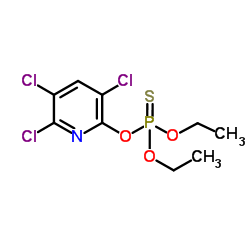 CAS#:2921-88-2
CAS#:2921-88-2 CAS#:107-13-1
CAS#:107-13-1 CAS#:76-02-8
CAS#:76-02-8 CAS#:2402-79-1
CAS#:2402-79-1 CAS#:5598-15-2
CAS#:5598-15-2 CAS#:856850-90-3
CAS#:856850-90-3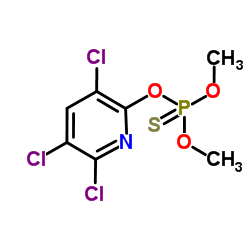 CAS#:5598-13-0
CAS#:5598-13-0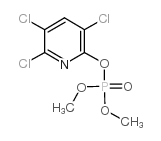 CAS#:5598-52-7
CAS#:5598-52-7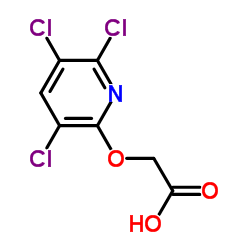 CAS#:55335-06-3
CAS#:55335-06-3 CAS#:31557-34-3
CAS#:31557-34-3 CAS#:75348-52-6
CAS#:75348-52-6 CAS#:55933-90-9
CAS#:55933-90-9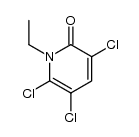 CAS#:105459-38-9
CAS#:105459-38-9
